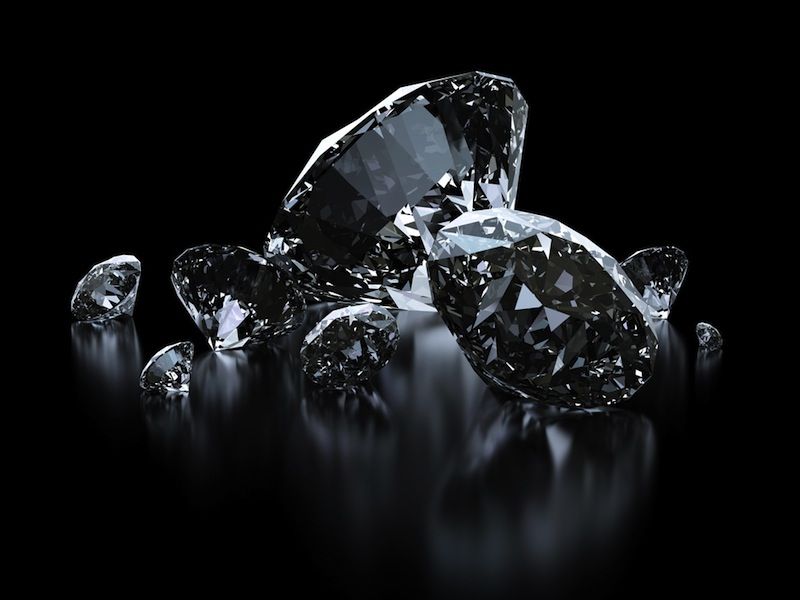
Tiffany & Co.: Why Jewelry Must Be Sustainably Sourced (Op-Ed)

Michael Kowlaski is chairman and CEO of Tiffany & Co. This article is adapted from an article for the Skoll World Forum. The authors contributed this article to LiveScience's Expert Voices: Op-Ed & Insights.
Tiffany & Co. long ago recognized the inconvenient truth that the core activity upon which all jewelers rely — precious metal and gemstone mining — has a long and sad association with abuses of human rights and the environment.
There has been much progress in addressing those abuses, but much remains to be done. One need look no further than the horrors of the diamond fields of Zimbabwe or the threatened destruction of Alaska's pristine Bristol Bay salmon fishery by mine development to understand the challenges that remain.
For Tiffany & Co. — devoted to our mission of creating objects of lasting beauty to celebrate the most important moments of our customers' lives — such abuses, however remote from our own supply chain, clearly represent a fundamental business risk. The Tiffany& Co. brand is built upon trust, integrity and consumer confidence, and an implicit but critical part of the brand promise is that the precious jewelry we design and craft was sourced and created ethically, and responsibly.
In order to deliver on that promise, over the past 15 years, Tiffany & Co. has pursued a strategy of vertical integration that we believe is unprecedented and unmatched in the jewelry industry. The company manufactures the majority of its jewelry, and cuts and polishes its diamonds — which are some of the finest in the world — in Tiffany & Co.'s own workshops.
Nearly all of the packaging and paper for our jewelry comes from sustainably managed forests. And Tiffany & Co.'s long-term objective — with much progress already — is within reach: Identify the mine source of our precious metals and diamonds to ensure that those materials have been extracted ethically and responsibly.
Beyond our own supply chain, we also recognize that the power of the Tiffany & Co. brand within the luxury space provides the company with the opportunity and the responsibility to address the broader challenges facing the jewelry industry. Clearly, lack of consumer confidence in the jewelry supply chain has implications for Tiffany & Co., however confident the company may be in its own efforts.
Sign up for the Live Science daily newsletter now
Get the world’s most fascinating discoveries delivered straight to your inbox.
There is a business imperative, as well as a moral imperative, to engage with civil society, government, our industry colleagues and industry associations to address these issues. To that end, the company continues to seek more effective regulation of mining activities on federal lands here in the United States and a fair return to taxpayers for the privilege of mining those lands.
Tiffany & Co. has opposed mine development in places of special cultural and ecological value, and pledged never to source materials from those mines. The company is working to establish a global certification system for mining that includes not just industry, but civil society as full partners in the process. Tiffany & Co. does not source diamonds and precious metals from areas of conflict, including the Democratic Republic of the Congo and Zimbabwe.

Despite the progress, those efforts have not been without disappointment. The diamond supply chain, overall, is significantly better than 10 years ago. However, the Kimberly Process, the global framework created to address the horrors of conflict diamonds, is still in need of important change. Federal mining law reform remains elusive after 20 years of trying. A global mining certification system is still a work in progress.
But in the 15 years since Tiffany & Co. first protested the development of a gold mine that threatened Yellowstone National Park, a sea change has slowly but surely been taking place in the jewelry world. Engagement with social and environmental non-governmental organizations, once seen by many in the industry as quixotic if not dangerous, is now acknowledged as a prudent recognition of a critically important group of stakeholders. Investors who were once indifferent now applaud our sustainability efforts. Employees who were at first puzzled by new demands placed upon them now speak with pride of our accomplishments. Board members once only broadly aware of the company's sustainability efforts now enthusiastically encourage us. Perhaps most importantly, customers with little or no interest in the conditions under which our precious gemstones and metals were mined and crafted are now anxious to understand how their purchases intersect with the world around them.
And while we deeply believe in the moral imperative to act responsibly, we also understand that if we do not concern ourselves with the impact of our activities on the natural world and upon the communities in which we work, Tiffany & Co. will be unable to deliver another critical part of our brand promise — to leave behind a world every bit as beautiful and complete as the one we inherited.
This article originally appeared as "Tiffany & Co. CEO Talks Sustainability" on the Skoll World Forum on Social Entrepreneurship, a premier international platform for accelerating entrepreneurial approaches and innovative solutions to the world's most pressing social issues. The views expressed are those of the author and do not necessarily reflect the views of the publisher. This version of the article was originally published on LiveScience.












